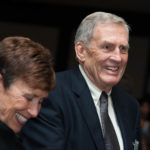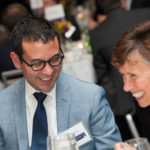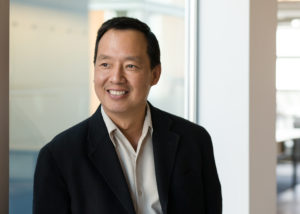 NBBJ, a leading global architecture firm, is well known locally for its work on familiar Seattle buildings, including the Bill & Melinda Gates Foundation, Safeco Field, and 2 Union Square. David Yuan is an Architect and Partner at NBBJ and has been a Runstad Board member since 2013. During his 26 year tenure at NBBJ, he has worked on a number of high profile projects, including Madison Centre, Russell Investments Center, Pacific Place, and the renovation of the Seaboard Building.
NBBJ, a leading global architecture firm, is well known locally for its work on familiar Seattle buildings, including the Bill & Melinda Gates Foundation, Safeco Field, and 2 Union Square. David Yuan is an Architect and Partner at NBBJ and has been a Runstad Board member since 2013. During his 26 year tenure at NBBJ, he has worked on a number of high profile projects, including Madison Centre, Russell Investments Center, Pacific Place, and the renovation of the Seaboard Building.
One of his recent projects, three new blocks for Amazon in the Denny Triangle, has garnered significant attention in recent press. Yuan worked with the NBBJ team on the design and to secure land use approvals for the three block project, which included obtaining three alley vacations from the city in less than a year.
“One of the main drivers of the project is to create a neighborhood,” Yuan emphasizes, “and to promote an active street environment, encouraging pedestrian activity through public amenities such as mid-block pedestrian connections, a dog park and a sports field.”
At the lower levels in each office tower, NBBJ has designed what they term “Centers of Energy”, spaces that foster informal meetings and increased collaboration among Amazon employees.
Of course, all eyes are on the Spheres, three iconic structures inspired by classic greenhouses that provide employees an opportunity hold meetings in a plant rich environment, complete with tree houses. “We wanted to create an environment where employees could think creatively and come up with ideas they may not have had in a standard workstation. The Spheres were technically challenging and designed not only to accommodate a diversity of plants, but to function as an effective place to meet during the day.”
NBBJ endeavors to design vibrant places that entice people to be creative, engage with each other and with their surroundings, a goal that Yuan continues to champion in his other current projects, including the 36-story Madison Center in downtown Seattle, and Centre 425, a 16 story office building in Bellevue both under construction.
As a Board member, Yuan stresses the host of opportunities offered by the Runstad Center. “Make sure you are well attuned to your own passions, interests, and skills,” he recommends, “and make use of the affiliated resources, including the great alumni and the industry connections.”
Acknowledging Seattle’s growth in recent years, he recognizes the need for all parties to coalesce and build the city together. “Seattle has been blessed as a destination for creative people. Because we are open to new comers and are located in a wonderful natural environment, we attract innovative companies who look to recruit the brightest and the best as a result,” Yuan says. “However, we are experiencing growing pains, affordability issues, and are heavily constrained by physical challenges like hills and water. So the question is, how do you design for growth? How do you create community that is connected to transit, has open space, and are highly liveable while accommodating higher densities? An answer must be found by neighborhood leaders, developers and policy makers working together to find creative solutions for the future.














 NBBJ, a leading global architecture firm, is well known locally for its work on familiar Seattle buildings, including the Bill & Melinda Gates Foundation, Safeco Field, and 2 Union Square. David Yuan is an Architect and Partner at NBBJ and has been a Runstad Board member since 2013. During his 26 year tenure at NBBJ, he has worked on a number of high profile projects, including Madison Centre, Russell Investments Center, Pacific Place, and the renovation of the Seaboard Building.
NBBJ, a leading global architecture firm, is well known locally for its work on familiar Seattle buildings, including the Bill & Melinda Gates Foundation, Safeco Field, and 2 Union Square. David Yuan is an Architect and Partner at NBBJ and has been a Runstad Board member since 2013. During his 26 year tenure at NBBJ, he has worked on a number of high profile projects, including Madison Centre, Russell Investments Center, Pacific Place, and the renovation of the Seaboard Building.
